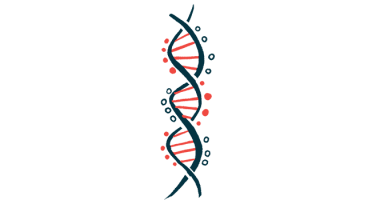‘Significantly’ Lower Levels of Growth Hormone IGF-1 Found in PWS Infants

Infants and toddlers with Prader-Willi syndrome (PWS) have significantly lower blood levels of insulin-like growth factor 1 or IGF-1 — indicative of growth hormone (GH) deficiency — than their healthy peers, a small study in Japan shows.
This is the first study to conduct this type of comparative analysis using healthy individuals matched to patients in their age, body size, and nutritional status — factors known to influence IGF-1 levels.
These findings further support the identification of IGF‐1 deficiency as a characteristic of PWS in young children. Importantly, the data also support the initiation of growth hormone treatment at early ages, irrespective of the results of conventional GH tests. Here, similarly to previous reports, such tests failed to effectively detect GH deficiency in these young children, the researchers noted.
The study, “Circulating insulin-like growth factor 1 levels are reduced in very young children with Prader–Willi syndrome independent of anthropometric parameters and nutritional status,” was published in the journal Clinical Endocrinology.
PWS is a genetic disorder characterized by low muscle tone, insatiable hunger, poor growth, developmental delays, and hormonal abnormalities such as GH deficiency, with most of these clinical features resulting from hypothalamic dysfunction. Many patients with PWS also have related learning difficulties and behavioral problems.
The hypothalamus is a brain region that controls hormone production and is involved in several important functions, such as hunger, growth, and sleep.
Previous studies have shown that GH treatment can improve physical health, cognitive function, and quality of life in children with PWS regardless of proven growth hormone deficiency, thereby being a mainstay treatment.
However, the conventional GH provocation test, used to assess such hormone production in response to known GH-promoting molecules, “often fails to reveal the presence of GH deficiency in PWS subjects, particularly in very young children,” the researchers wrote.
IGF-1 is a hormone that, together with GH, promotes normal bone and tissue growth. Given that it responds to GH, it typically is used to monitor the effectiveness of growth hormone treatment. Blood IGF-1 levels also can reflect a person’s GH status, but they are known to be affected by age, sex, body size, and nutritional status.
While several previous studies have reported lower-than-normal levels of IGF-1 in young children with PWS, they typically did not consider these variables — of which body size and nutritional status are particularly altered in these patients.
Now, a team of researchers in Japan set out to assess whether IGF-1 deficiency is indeed a feature of PWS in young children by comparing their blood IGF-1 levels with those of healthy children matched for age, sex, body size, and blood levels of albumin, a marker of nutritional status.
The researchers retrospectively analyzed the data of 65 infants and toddlers with PWS — 38 girls and 27 boys — and 111 matched healthy children (controls); the controls comprised 60 boys and 51 girls. All had visited the Osaka Women’s and Children’s Hospital, in Japan. None had received previous growth hormone treatment.
The participants’ median age was 14 months for PWS patients and 14.3 months for controls.
The results showed that, after adjusting for the known influencing factors, IGF-1 levels were significantly lower in PWS patients relative to matched healthy controls. These findings did not vary with age, as both infants and toddlers with PWS — children with ages up to 47 months, or nearly 4 years — had significantly lower levels than their respective age-matched controls.
Notably, there was no association between age and IGF‐1 levels in either group.
In addition, only nine (31%) of the 29 children with PWS who underwent the GH provocative test showed deficient responses. The IGF-1 levels of these children were not significantly different from those whose tests suggested normal GH production.
These findings highlight that “low IGF‐1 levels are a characteristic of PWS and that this is independent of body size and nutritional status,” the researchers wrote, adding that IGF‐1 deficiency “is likely a consequence of hypothalamic dysfunction of GH secretion.”
The results also suggest that the conventional GH provocation test “may not be suitable for detecting GH deficiency in very young children with PWS,” the team said.
Notably, previous studies showed that the GH provocation test’s results do not necessarily reflect spontaneous growth hormone production, which was shown to be associated with IGF-1 levels.
While spontaneous GH production was not analyzed in this study, the previous findings, together with the newly observed low IGF‐1 levels in very young children with PWS, regardless of GH provocation test results, “imply that IGF‐1 levels may better reflect the status of GH secretion in PWS,” the scientists wrote.
“However, this may only be true in children with PWS as there is evidence indicating that IGF‐1 levels are not decreased in adults with PWS,” they added.
These data “may shed light on our understanding of the GH status in [patients] with PWS and provide a rationale to initiate GH treatment in subjects with PWS irrespective of the results of the GH provocation test,” the team wrote.
Larger studies are needed to confirm these findings, the researchers said, as well as to assess whether IGF-1 levels can be used to assess growth hormone status in adults with PWS.








